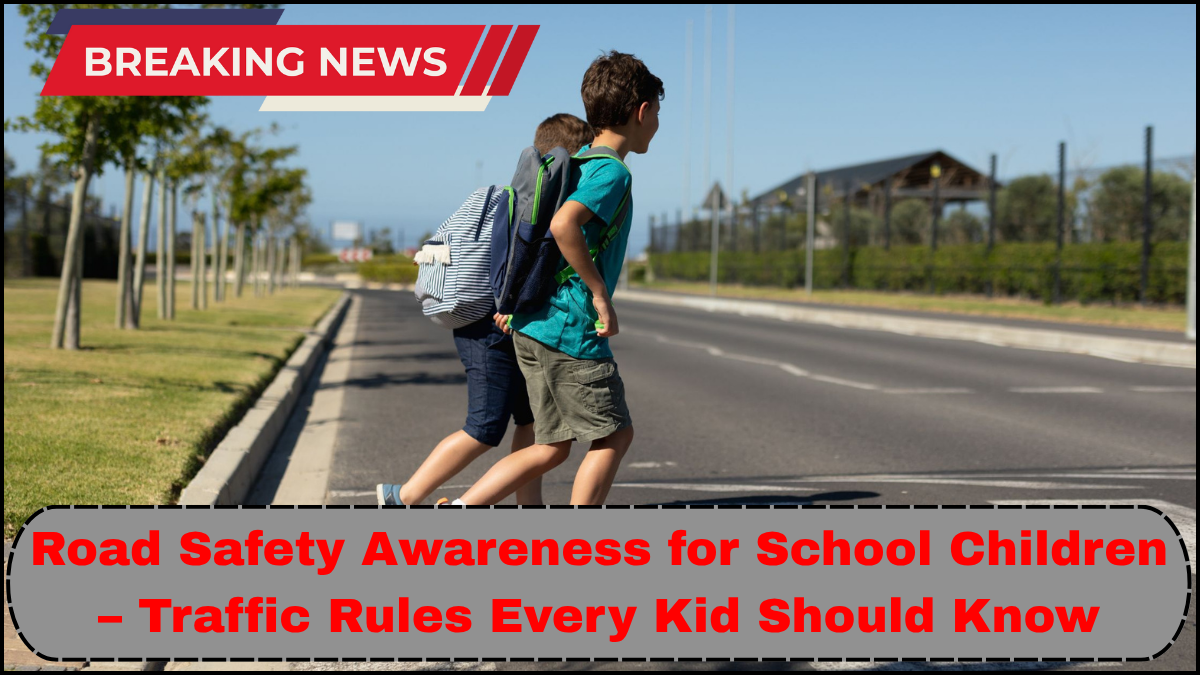Every day, millions of children travel to and from school on foot, by bicycle, or in vehicles. Teaching them about road safety isn’t just a precaution—it’s a responsibility. With growing traffic congestion and fast-paced urban life, kids need to understand how to navigate streets safely. Instilling traffic rule awareness for school kids can drastically reduce accidents and build a foundation for responsible behavior in the future.

Basic Traffic Rules Every Child Should Know
1. Always Use Zebra Crossings
Zebra crossings are designated pedestrian paths marked with white stripes. Children must be taught to cross only at these points and wait until vehicles have come to a complete stop. Explain the importance of making eye contact with drivers before stepping onto the road.
2. Obey Traffic Lights
Introduce kids to traffic signal rules using simple language:
- Red means stop.
- Green means go.
- Yellow means slow down and prepare to stop.
Use examples like toy signals or real-life photos to help them remember.
3. Learn and Recognize Road Signs
Understanding road signs is crucial. Start with basic signs:
- Stop
- School ahead
- Pedestrian crossing
- Speed limits
Interactive school activities such as games or flashcard quizzes can reinforce these symbols in a fun, memorable way.
Pedestrian Safety: Do’s and Don’ts
Children should be educated on how to behave as pedestrians. Emphasize these points:
- Walk on the footpath; if unavailable, walk facing traffic.
- Never run across the road.
- Avoid using mobile phones or headphones while walking near traffic.
Role-playing scenarios or videos during school safety sessions can make these lessons stick.
Safe Behavior on School Buses and Vans
Transport safety is part of overall road safety. School children should know:
- Always board and exit from the left side of the vehicle.
- Stay seated until the vehicle comes to a complete stop.
- Do not distract the driver.
Teachers and transport attendants can conduct brief daily reminders or weekly checks to reinforce these habits.
Importance of Crossing Rules Near Schools
School zones are high-risk areas due to the volume of foot traffic. Enforcing crossing rules like using school patrol crossings, following crossing guards’ instructions, and waiting patiently at intersections can protect students.
Schools can install signage, and local authorities can collaborate on speed bumps or pedestrian lights near entrances to improve safety.
Promoting Road Safety Through School Events
Organizing school events focused on traffic safety is a great way to engage children and parents alike. Consider:
- Road safety weeks with activities and competitions.
- Mock traffic park setups for practical learning.
- Visits from local traffic police to explain real-world rules.
These events transform abstract rules into lived experience, boosting retention and compliance.
Integrating Road Safety into the Curriculum
Road safety education shouldn’t be limited to occasional sessions. Schools should integrate it into health or social studies lessons. Regular reinforcement helps children internalize the information and apply it instinctively.
Collaboration with parents is also vital. Reinforcing traffic rule awareness for school kids at home strengthens what they learn in class.
FAQs: Road Safety for School Children
Q1. What is the most important road safety tip for kids?
Always stop, look both ways, and listen before crossing any street.
Q2. How can schools promote road safety effectively?
By organizing events, embedding safety lessons into the curriculum, and involving parents and local authorities.
Q3. Why is understanding road signs important for children?
Recognizing road signs helps kids anticipate potential dangers and act accordingly.
Q4. What role do school events play in safety education?
School events provide hands-on experience, which reinforces theoretical knowledge through engaging activities.
Q5. At what age should children start learning traffic rules?
Basic concepts can be introduced as early as preschool, with more detailed lessons as children grow.
click here to learn more